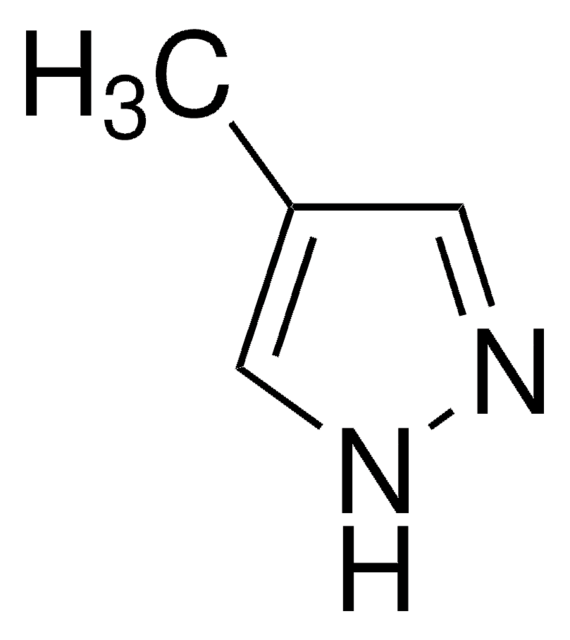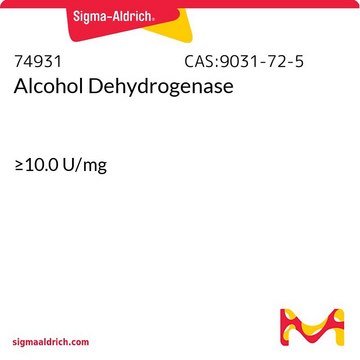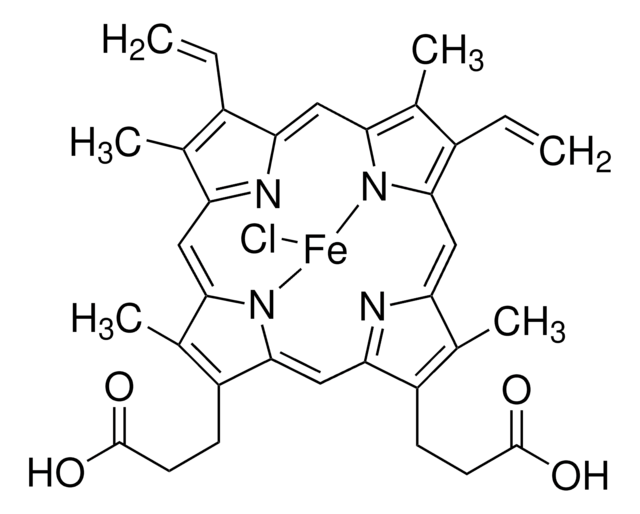M1387
4-Methylpyrazole hydrochloride
alcohol dehydrogenase inhibitor
Synonym(s):
Fomepizole
About This Item
Recommended Products
biological source
synthetic (organic)
assay
≥95%
form
powder
mp
157-159 °C
solubility
methanol: 100 mg/mL, clear, colorless to yellow
storage temp.
2-8°C
SMILES string
Cl.Cc1cn[nH]c1
InChI
1S/C4H6N2.ClH/c1-4-2-5-6-3-4;/h2-3H,1H3,(H,5,6);1H
InChI key
PUCXJHNDMYZOHG-UHFFFAOYSA-N
Gene Information
human ... ADH1A(124) , ADH1B(125) , ADH1C(126)
Looking for similar products? Visit Product Comparison Guide
Application
- as a cytochrome P450 2E1 inhibitor
- as cytochrome P450 2E1 and alcohol dehydrogenase inhibitor in 1C11 neural progenitor cells
- to inhibit ethanol oxidation in VL-17A cells expressing alcohol dehydrogenase and HepG2 cells
Biochem/physiol Actions
signalword
Warning
hcodes
Hazard Classifications
Eye Irrit. 2 - Skin Irrit. 2 - STOT SE 3
target_organs
Respiratory system
Storage Class
11 - Combustible Solids
wgk_germany
WGK 3
flash_point_f
Not applicable
flash_point_c
Not applicable
ppe
dust mask type N95 (US), Eyeshields, Gloves
Certificates of Analysis (COA)
Search for Certificates of Analysis (COA) by entering the products Lot/Batch Number. Lot and Batch Numbers can be found on a product’s label following the words ‘Lot’ or ‘Batch’.
Already Own This Product?
Find documentation for the products that you have recently purchased in the Document Library.
Our team of scientists has experience in all areas of research including Life Science, Material Science, Chemical Synthesis, Chromatography, Analytical and many others.
Contact Technical Service









